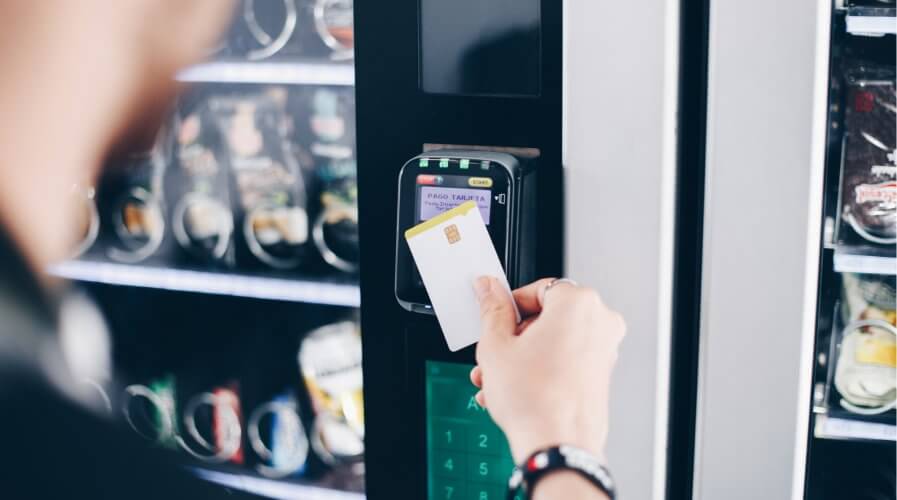
The way to pay today. Source: Shutterstock
Retailers must innovate now as cashless here to stay, says Visa
- Visa study suggests cashless payment habits are staying put as the health crisis appears to subside
- This brings new opportunities for retailers, but they must adapt to new consumer trends
- The goal for many is to bridge online and offline experiences, leveraging the advantages of both for powerful omnichannel retail
The pandemic has accelerated the uptake of cashless payments in Asia, and across the world.
With businesses and customers alike looking to reduce physical contact in efforts to stop the spread of the virus, this type of technology – whether in-built into contactless credit cards, on our smartphones, or via other neat solutions like QR – has been the obvious and, in some cases, only choice for payment.
In May, a global consumer survey by Mastercard found that 68% of shoppers in Asia Pacific would rather buy from stores offering a contactless payment, as opposed to touching an exposed PIN keypad or pen or handling cash.
But, as lockdowns begin to ease, and retail outlets for less essential services begin to reopen in efforts to kickstart economies once again, payments giant Visa is finding that those habits seem to be staying put.
In Singapore, where Visa focused its research, two-thirds (66%) of consumers are forming cashless habits, preferring to pay with cards or through mobile apps over cash. The vast majority (78%) said they intend to stick with digital payment methods instead of reverting back to cash when the health crisis is over.
“We approached the study with the intention to gain a timely, deeper and clearer understanding of how Singaporean consumer behaviors are changing in the current environment,” said Kunal Chatterjee, Visa country manager for Singapore & Brunei.
“In this new normal, we’re seeing a shift – Singaporeans are becoming more digital, and the COVID-19 situation has forced consumers to adopt this change in behavior.”
The city-state isn’t alone. Just like how few corners of the world have been unaffected by stringent lockdown measures, the uptake of cashless methods seems universal, with 61% of Asia Pacific consumers and 59% of global respondents embracing them. Worldwide, at least two-thirds of consumers in the study want to continue the cashless approach.
The news should be welcome by retailers who are looking to revitalize and modernize both their online and offline operations. Contactless payment tech can serve as a ‘data bridge’ between the two, enabling brands to collect information which can be used to target personalized offers, enable loyalty programs, or simply gain more insight into what makes their shoppers tick.
And aggressive adoption and innovation into new means of driving sales will be key. Since there really isn’t any return to normal on the cards, exploring how to integrate online and offline experiences – while maxing out the benefits of each – is the goal many retailers are seeking to tackle.
The last 3 months have been long enough for consumers to embrace these new shopping habits, not just as measures of survival, but as measures of convenience. Visa found that many consumers started buying online – and engaging with digital services, such as banking and utilities – for the first time ever amid the pandemic, and many are finding the experience to be more positive than face-to-face experiences, while enjoying better prices as a result of wider, often cross-border competition.
A massive surge towards online shopping and services won’t subside quickly. E-commerce growth was 10 times faster than physical retail in March this year, according to VisaNet data.
As a result, retailers may find footfall continues to drop in the stores, meaning there will be less reliance on the physical outlets for sales, and more focus on building brand affinity and loyalty through tangible experiences and in-person customer service. Strike the balance right, and retailers can capitalize on a new trend of buying online, and engaging in-store.
The next year will be tough but transformational for retail; whether it’s exploring the virtues of Shoppertainment or embracing exciting technologies like AR, brands must be ready to take the plunge with new technologies and innovations. With consumers ready to leave cash in the past, we know they’re ready for it.
READ MORE
- Safer Automation: How Sophic and Firmus Succeeded in Malaysia with MDEC’s Support
- Privilege granted, not gained: Intelligent authorization for enhanced infrastructure productivity
- Low-Code produces the Proof-of-Possibilities
- New Wearables Enable Staff to Work Faster and Safer
- Experts weigh in on Oracle’s departure from adland


